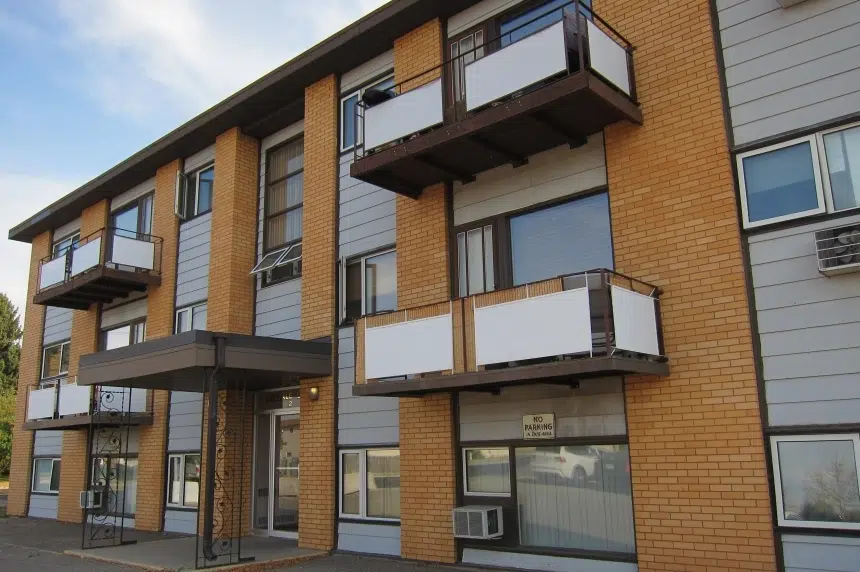A new report from the Canada Mortgage and Housing Corporation (CMHC) paints a grim picture for landlords in Saskatoon’s apartment market.
The study shows apartment vacancies jumped from 6.5 per cent in October 2015 to 10.3 per cent in October of this year — the highest rate on record.
Sheena Kessling, vice-president of operations with Mainstreet Equity Corp., said competition for tenants is getting fierce, with companies offering everything for discounted rents to free cable packages to get people to sign leases.
“As a landlord, we’re fighting for every application and every phone call. So we have to be the best in the market,” she said.
Kessling said one of the keys to weathering downturns is planning during the good times.
She said it’s vital for landlords to re-invest profits during boom years into upgrades and maintenance, in preparation for leaner times.
“When we’re fighting for tenants, we have less revenue coming in and so if you didn’t do the work in those buildings when you did increase the rents, then I think the reprecussions are going to be greater.
People remember that. If you rented them a really bad suite and put a high price tag on it three years ago, four years ago — they’re going to remember that now,” she said.
This is the third straight year the apartment vacancy rate has gone up in Saskatoon.
The CMHC report cites a slowing economy, coupled with an increase in supply for driving the record number of apartments sitting empty.
On the economy side – Saskatoon saw unemployment rise by 0.8 per cent year-over-year, according to the report. That translates to the loss of 3200 full-time positions.
While those job losses were offset somewhat by the addition of 1800 part-time jobs, the overall effect has been to drive more people out of the apartment market.
A slower economy has also increased stock in the secondary rental market; more people are renting out basement suites or rooms in their homes, further cutting into the customer base for apartments.
The condo building boom has also played a role.
The number of condo units increased from 10,576 in 2015, to 10,946 units this year.
This has resulted in more condos finding their way into the rental market, mainly taking customers away from higher-end rental offerings.
According to the report, the number of investor-owned condos on the rental market has gone up from 20.7 per cent to 22.9 per cent.
The supply of purpose-built rental apartments has also gone up – further contributing to the high vacancy rate.
Overall, the number of available units rose from 13,370 in 2015 to 13,507 in 2016, an increase of 137.
But the overall number of occupied units dropped by 385 in the same time period: demand has declined while supply has gone up.
While the numbers show a difficult climate for landlords, many renters are finally starting to catch a bit of a break after the super-heated market of a few years ago.
Overall, the average rent for the Saskatoon metropolitan area declined 0.9 per cent to $1,019.
Chandra Lockhart, executive director of the Saskatchewan Landlord’s Association, said she can understand how people might not be too sympathetic to an industry that benefited from years of tight markets.
But, she noted, a downturn in the industry has knock-on effects that might be surprising to many.
“If you look up the numbers, we do contribute more than mining in this province. It is an important industry to have,” she said.
Lockhart said overall, Saskatchewan’s rental industry provides about 82,000 housing units, employs around 10,000 people and contributes about $480 million to Saskatchewan in taxes.

Saskatoon apartment vacancies hit record high
Nov 29, 2016 | 5:38 PM






